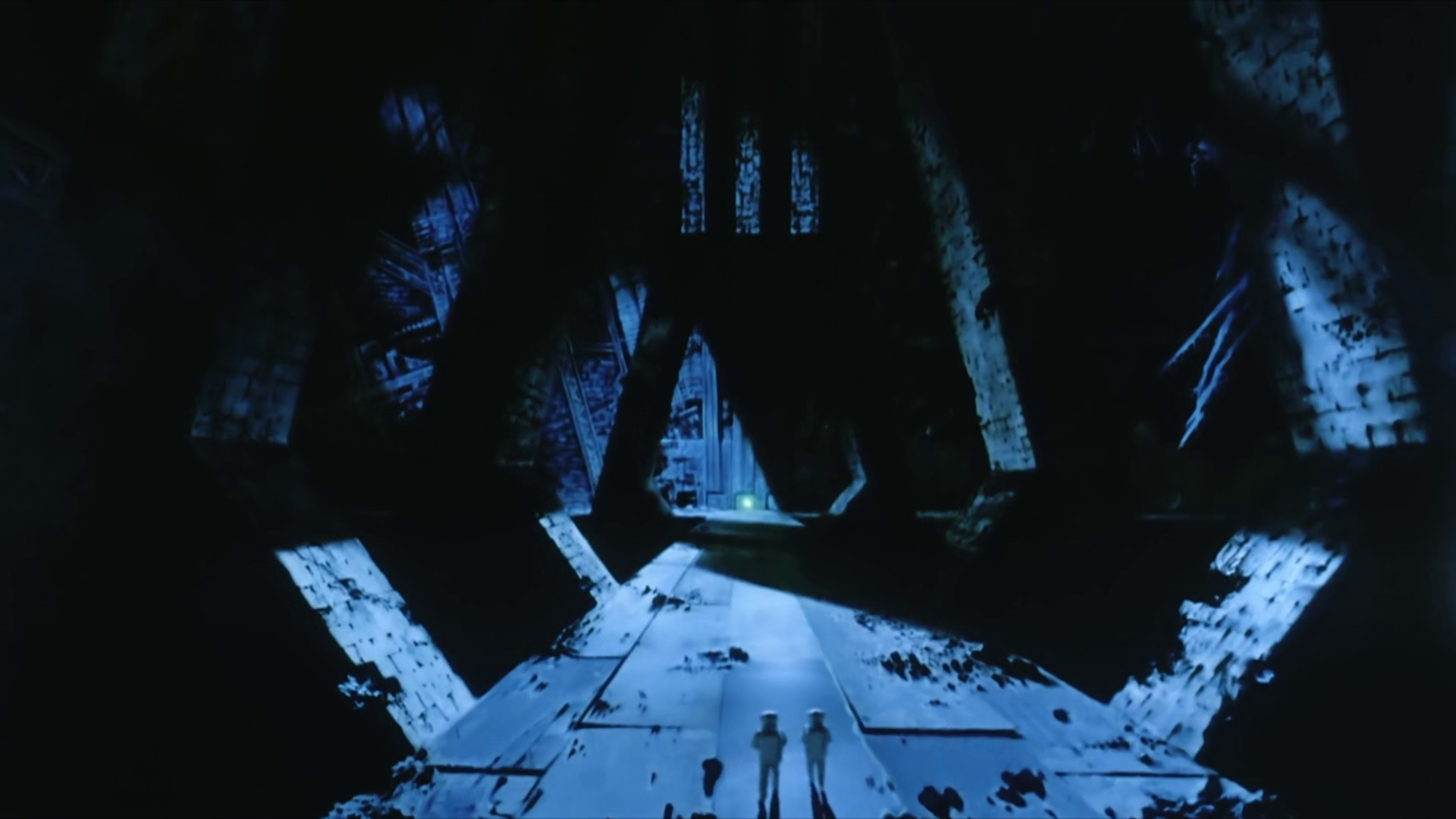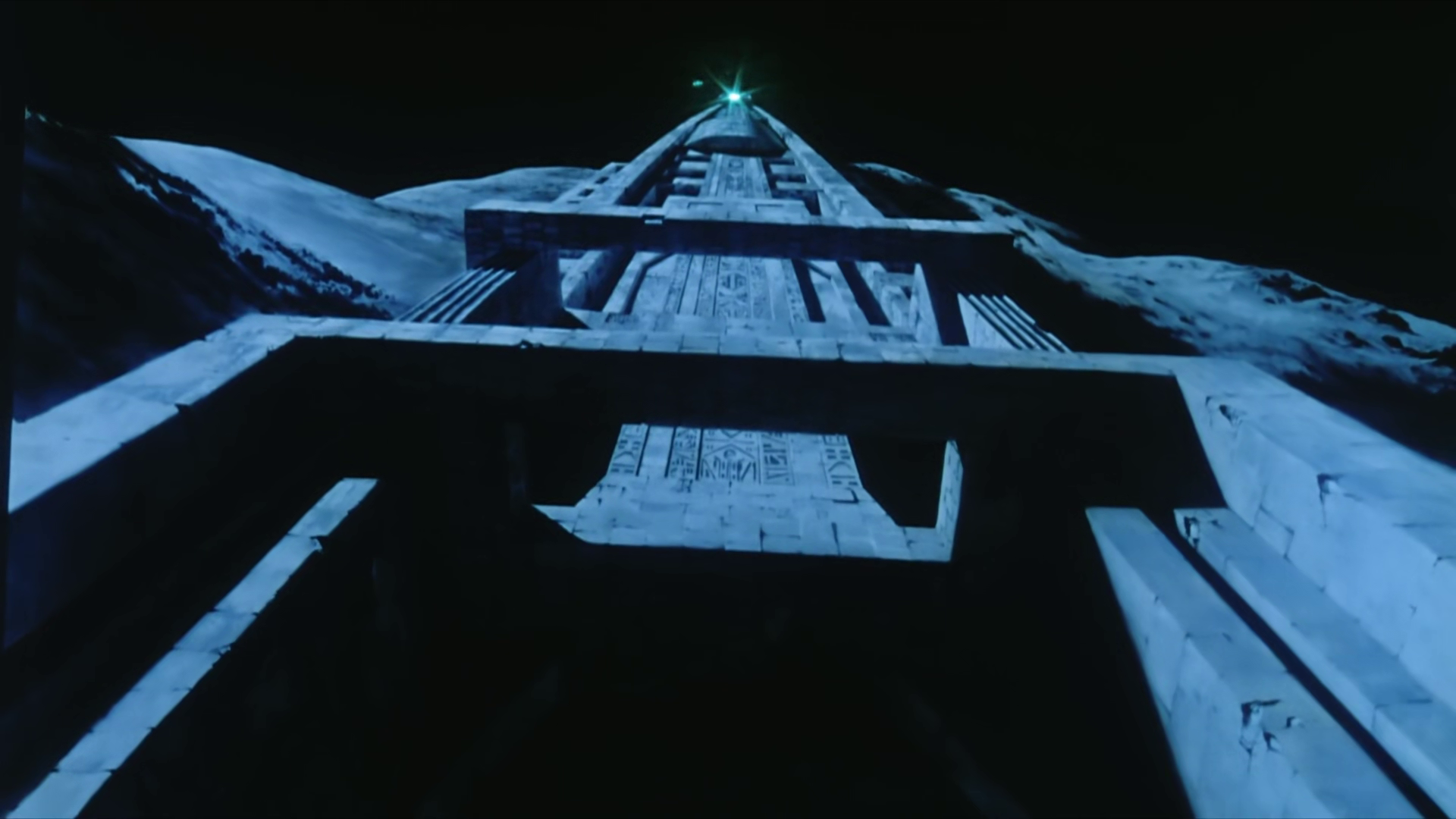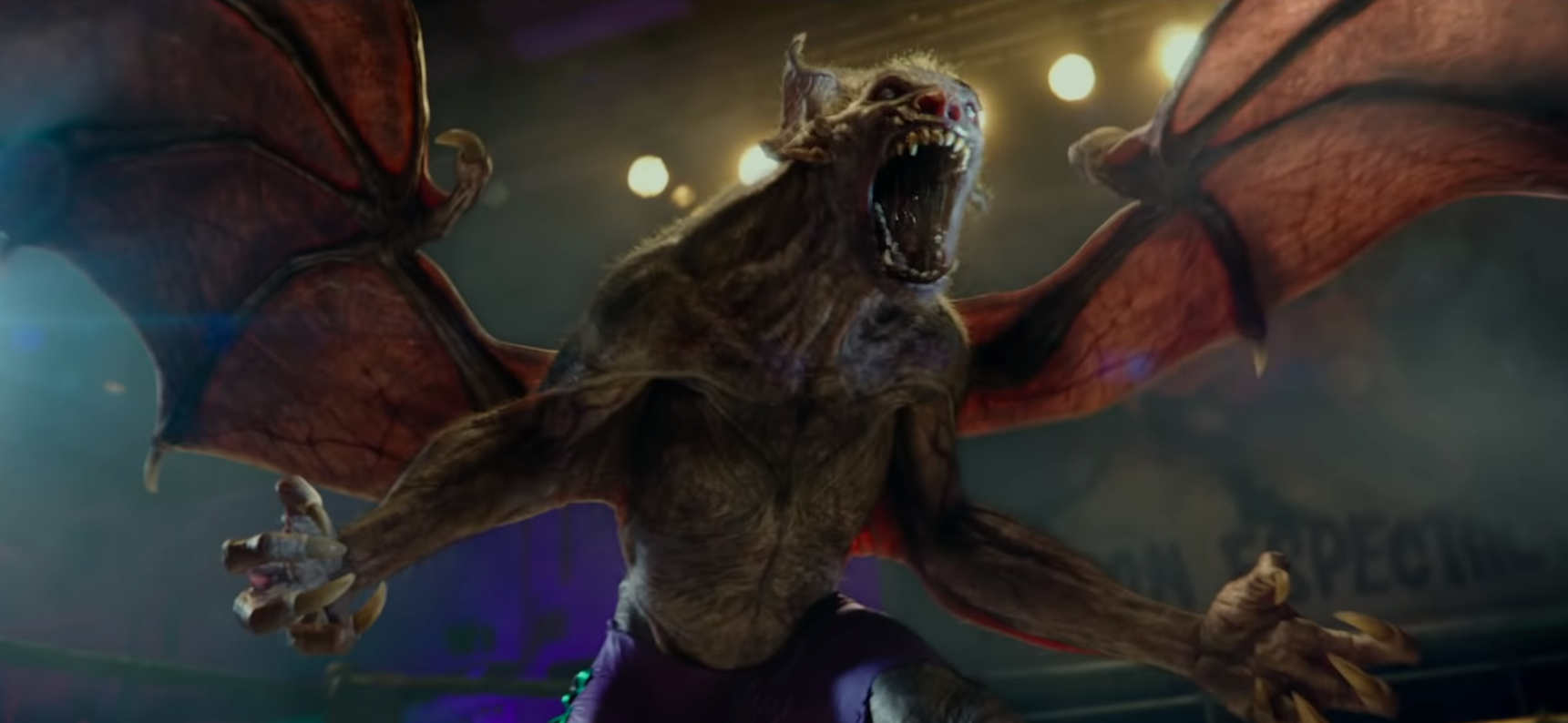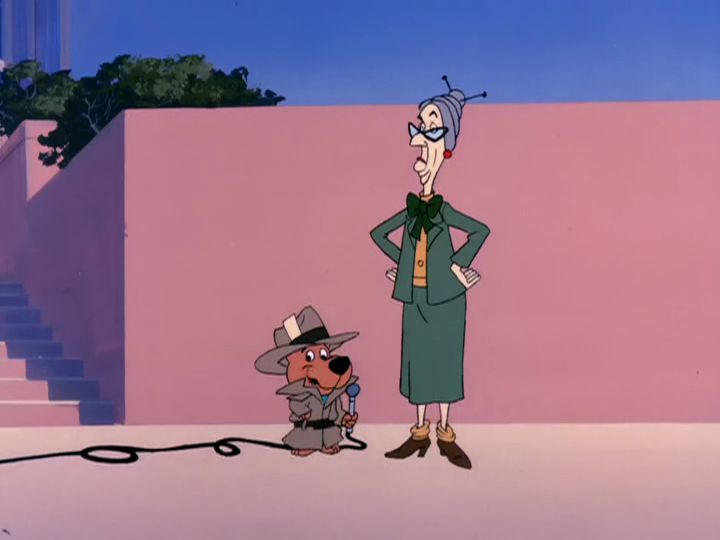By the late 1970s, America had clearly won the space race — having planted the flag on the moon and flipped the bird to the Commies — but come the 1980s, America started to consider space travel to be a little blasé, with space shuttle launches no longer getting much national coverage at all, and films like SpaceCamp floundering in the box office as a result, but such worries didn’t stop producer/director Robert Dyke from coming up with his exciting action-adventure flick Moontrap, where intrepid astronauts would do battle with alien forces hell-bent on conquering the Earth; but who could stand in the way of an insidious alien menace?
Enter Pavel Chekov and Ash Williams.
On a routine space shuttle mission to collect a malfunctioning satellite, mission commander Colonel Jason Grant (Walter Koenig) and fellow astronaut Ray Tanner (Bruce Campbell) encounter a massive derelict spacecraft, but due to its orbital decay, it will soon burn up in the Earth’s atmosphere. Grant volunteers to perform an EVA (extravehicular activity) and he discovers a strange reddish pod — the only thing on the alien craft not burned up — but along with the pod, he retrieves a desiccated corpse of a human. Back at NASA, carbon dating reveals that the corpse originated from the moon and is some 14,000 years old.Science Note: The Carbon 14 method only works for creatures/objects that lived or were created in the Earth's atmosphere, and thus would not be helpful in determining the age of things from the Moon.
Grant and Tanner get into a pissing match with a government stooge named Haskell (Reavis Graham), who practically accuses NASA official Barnes (John J. Saunders) of concocting this whole thing just to get more funding, but Tanner points out that if they don’t go to the moon, to see what technology could be found on a hidden alien base, the Russians surely will. Meanwhile, back in the lab, that little reddish pod opens up, a little robot probe pops out and it begins to combine the desiccated corpse with the equipment in the lab, to create a killer cyborg. This results in some poor NASA employee being brutally murdered and a S.W.A.T. team mobilizing to combat the alien invader, and during all this action all I could think of was, “Does NASA actually have a S.W.A.T. team?”
Just how often is NASA attacked by killer cyborgs?
The cyborg survives a fury of weapons fire from S.W.A.T., but Grant manages to sneak into a ventilation duct, which allows him to get above the creature, and he blows its head apart with a well-placed shotgun blast. The mission to the moon is greenlit, with the last Apollo rocket being taken out of the mothballs, and soon Grant and Tanner are on some kind of “Search and Destroy” mission, with their friend Beck (Tom Case) manning the orbital command module, while Grant and Tanner take the lunar lander to the surface to hunt for the mysterious base. At this point, one has to be wondering, “Who are making these decisions?” I can see Grant and Tanner wanting to be part of this mission, the last Apollo mission being cancelled before Grant had a chance to moonwalk, but an alien cyborg had just attacked Earth, and yet their response is to send Abbot and Costello to investigate? Worse is that these two guys are only equipped with a moon buggy and a couple of space Uzis. I know the filmmakers here were dealing with a low budget, but couldn’t they have swapped out a couple of those S.W.A.T. guys for some Space Marines to go along with Grant and Tanner? We saw that cyborg firing lightning, as it held off all those S.W.A.T. dudes, so what did they expect two bumbling astronauts to do if they found an entire lunar base full of them? Did they even have a plan?“Do we tell them we’re from the Red Cross?”
What money Moontrap had in its budget clearly went towards the special effects, as the model work and matte paintings are all really quite splendid, but the designs for the mysterious lunar base were maybe a little too good, or at least a little extreme, because the entrance looked bigger than the Great Temple of Ramses, and a line from Walter Koenig stating, “No wonder we never saw it from orbit,” made little to no sense.Did it somehow camouflage itself into the lunar landscape?
They discover that this “base” is the ruins of an ancient human civilization, and inside it they find a woman in suspended animation, inside some kind of pod surrounded by human skeletons, and she is awoken by our hapless heroes — her name is Mera (Leigh Lombardi) and that’s about all we learn about her — but they barely have time to exchange names before being attacked by one of the cyborgs, who Mera later reveals are called the Kaalium. Grant and Tanner make quick work of the cyborg with their space Uzis — which is surprising considering a whole passel of S.W.A.T. guys couldn’t manage to do shit against one of them — and the newly formed trio exit the ruins and head back to their lunar module.Lucky for them, Mera has her own spacesuit.
Things go from bad to worse when they discover that the Kaalium have made off with the lunar module, but perseverance is their middle name, and they decide to follow the Kaalium tracks, to hopefully retrieve their ride home — being the vehicle can only get them into orbit, and not back to Earth, so finding it is only step one — and then matters are made even worse when further attacks result in Tanner being killed, and then poor Beck is pulled out of orbit and explodes on the lunar surface, so things don’t look too good for Grant and Mera as they seem to be stranded on the moon. There is a nice little moment where a despondent Grant turns to Mera — after he’s constructed a nice little space pup tent — and says, “I woke you up just so you could die with me,” but this then leads to a sex scene between the two, which seems only here to add a little more nudity — we also got some naked breasts earlier in the film when Grant and Tanner visited a strip club — and the whole thing is just so out-of-the-blue and unearned that it kind of puts one off.Lucky for us the movie picks up a bit when Cyborg-Tanner peaks in the window.
Grant is able to easily dispatch the horrifying creature that was once his friend, but unfortunately he and Mera end up being captured by the Kaaliums anyway, and the two are taken aboard the alien ship to be used for spare parts. Heroic Grant manages to free himself, and handily beats to death one of the Kaaliums trying to dissect Mera — these cyborgs do seem a lot easier to kill than the one we first encountered — and while exploring the Kaalium ship, they discover the landing module, which has been adapted into the alien machinery, and Grant deduces that the Kaalium have been on the moon for 14,000 years just waiting around for replacement equipment, and now with the lunar lander’s parts, the Kaalium are free to continue their journey to Earth.I guess the Kaalium didn’t have Intergalactic Triple-A.
Grant starts a self-destruct sequence on the landing module — Question: Was this added to the ship for this particular mission or are self-destruct devices standard NASA issue? — and as the clock counts down, a NASA space shuttle arrives on the scene — which had been sent up to destroy the approaching alien vessel — but before the shuttle can lock on with its missiles, Grant and Mera are attacked by a Kaalium crew member, and upon firing his space Uzi, he discovers that he can use the gun as propulsion to get them out of the ship before it explodes. Grant and Mera make it to a safe distance — cough *bullshit* cough — before the thing goes kablooey, and they are picked up by the space shuttle.Grant and Mera and their happy ending...or is it?
Robert Dyke’s Moontrap is not a terrible movie; it just seems like more of a raft draft than a finished product, as we are left with a few key unanswered questions:• How did the Kaalium end up stranded on the moon?
• How did mankind colonize the moon 14,000 years ago?
• Mera was put in suspended animation so that she could warn future generations of the Kaalium threat, but did this plan rely on us finding her before the Kaaliums found us?
• Why do Kaaliums need organic parts stolen from humans?

































